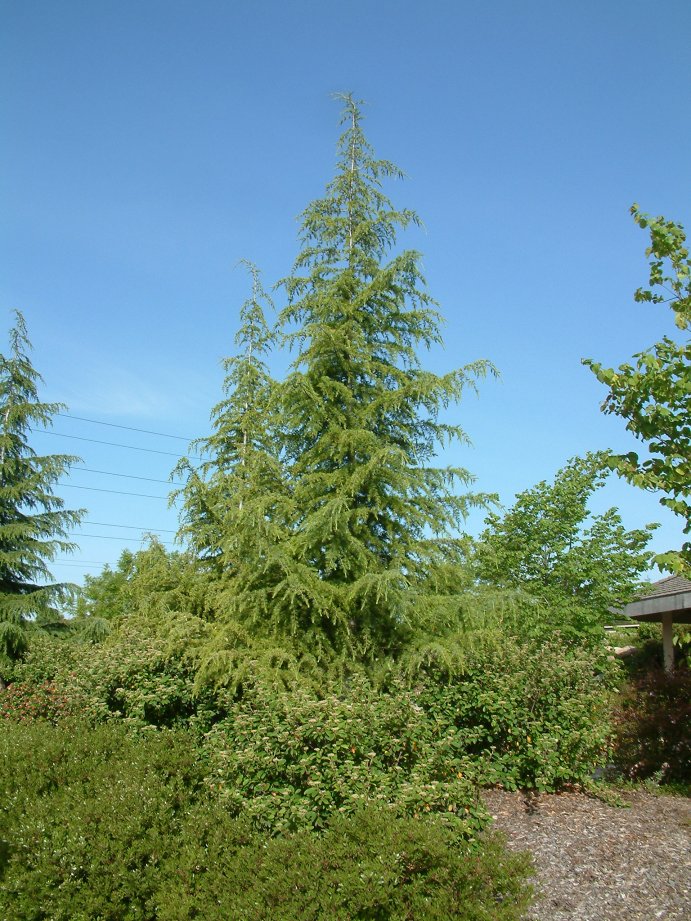| Botanical Name: Cedrus deodara | |
| Common Name: Deodar Cedar |

-
Anatomy
-
Culture
-
Design
Plant Type
Tree
Height Range
25-40', 40-60'
Flower Color
n/a
Flower Season
n/a
Leaf Color
Grey Green, Light Green
Bark Color
Brown, Green
Fruit Color
Brown, Purple
Fruit Season
Winter, Fall
Sun
Full
Water
Low, Medium
Growth Rate
Moderate
Soil Type
Clay, Loam, Rocky
Soil Condition
Average, Rich, Poor, Well-drained, Dry
Soil pH
Neutral, Basic
Adverse Factors
n/a
Design Styles
English Cottage, Formal, Japanese, Mediterranean, Ranch, Spanish, Woodland
Accenting Features
Silhouette, Specimen, Unusual Shape
Seasonal Interest
Winter, Spring, Summer, Fall
Location Uses
Background, Shrub Border, Park
Special Uses
Screen, Wind Break, Shade Tree
Attracts Wildlife
n/a
Information by: Stephanie Duer
Photographer: Normans/Mullany/Thompson
Photographer: Normans/Mullany/Thompson
-
Description
-
Notes
This coniferous evergreen forms a large pyramid with graceful, arching branches. Needles are a silvery grey-green to yellow-green. Give plenty of room as tis tree can grow to be 35 to 45 feet tall and 25 feet wide, and with age, even larger. Cedars have lovely cones, emerging bluish when young and aging a reddish brown.
The biggest mistake folks make when planting this tree is not giving it the room it needs to grow. It is a large tree. Prefers well-drained soils that are rich and loamy, though it will tolerate sandy or clay soils as long as they are not perpetually moist. Sun to part shade.